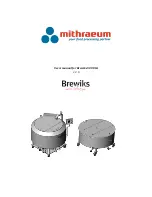
Intel® Server System R2000LH2/T2 Product Family TPS
Intel® Intelligent Power Node Manager (NM)
Revision 1.0
95
Read/write PCI configuration and Machine Check Register read access is provided via
IPMI OEM commands.
Support for configuration of filtering constant used by CPU to average CPU temperature
readings.
Read access to Icc TDC parameter of all CPUs on the platform over OEM IPMI
extension command.
PECI Proxy functionality supports configurations up to 4 processors and up to 4 memory
channels per processor socket.
13.1.7
ME Power and Firmware Startup
On EPSD server products, the ME is on standby power. The ME FW will begin its startup
sequence at the same time that the BMC FW is booting. As the BMC FW is booting to a Linux
kernel and the ME FW uses an RTOS, the ME FW will always complete its basic initialization
before the BMC. The ME FW can be configured to send a notification message to the BMC.
After this point, the ME FW is ready to process any command requests from the BMC.
In S0/S1 power states, all ME FW functionality is supported. Some features, such as power
limiting, are not supported in S3/S4/S5 power states. Refer to ME FW documentation for details
on what is not supported while in the S3/S4/S5 states.
13.1.8
ME Firmware Update
On EPSD server platforms, the ME FW uses a single operational image with a limited-
functionality recovery image. In order to upgrade an operational image, a boot to recovery
image must be performed. Unlike previous generation platforms, the ME FW does not support
an IPMI update mechanism except for the case that the system is configured with a dual-ME
(redundant) image. In order to conserve flash space, which the ME FW shares with BIOS,
EPSD systems only support a single ME image. For this case, ME update is only supported by
means of BIOS performing a direct update of the flash component. The recovery image only
provides the basic functionality that is required to perform the update; therefore other ME FW
features are not functional therefore when the update is in progress.
13.1.9
NM Discovery OEM SDR
A NM discovery OEM SDR must be loaded into the BMC’s SDR repository if and only if the NM
feature is supported on that product. This OEM SDR is used by management software to detect
if NM is supported and to understand how to communicate with it.
Since PMBus compliant power supplies are required in order to support NM, the system will be
probed when the SDRs are loaded into the BMC’s SDR repository in order to determine whether
or not the installed power supplies do in fact support PMBus. If the installed power supplies are
not PMBus compliant, the NM discovery OEM SDR will not be loaded.
Refer to the
Intel
®
Intelligent Power Node Manager 2.0 External Architecture Specification using
IPMI
for details of this interface.
13.1.9.1
ME-BMC Interactions
BMC stores sensor data records for ME-owned sensors.
Содержание S4600LT2
Страница 12: ......
















































